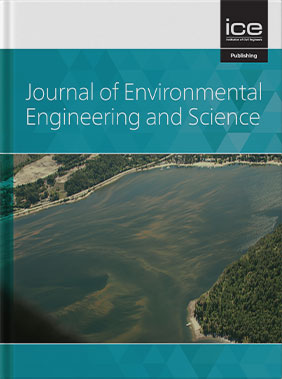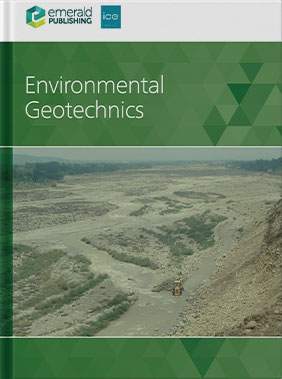
Environmental Geotechnics
Manuscript preparation guidelines for journal authors - Engineering
Our engineering journal titles report the latest research and current practice for the benefit of the international civil engineering profession and related disciplines. We also cover historical research and lessons learned from past events. Each paper is independently assessed and peer-reviewed.
All of our engineering titles broadly follow the guidelines below. More specific instruction may be found on the journal homepage of the title that you are submitting to.
Types of content
- Paper (including research, case study or project papers). A Research article is an original presentation of findings from an investigation. A case study looks at the effects of the implementation of, for example, a system and analyses it, in context of the situation.
- State-of-the-art review. A state-of-the-art review is an up-to-date summary of knowledge on a particular subject or issue and represents an overview of recent developments.
- Briefing articles. Short, topical updates, which are not sufficiently comprehensive or novel to be submitted as a research article. Typically, briefings are used to provide authoritative updates of relevant technical, regulatory and professional developments. They can introduce new ideas, explain new legislation, reflect on industry trends, provide the background to a new product or service, discuss anniversaries and events, or simply report a short case history.
- Book review. A book review provides a short description of an academic title and evaluates its quality and contribution to the field in question.
- Discussion. This article format allows reader to comment on previously published papers. Authors of the paper being discussed are given the right to reply. All correspondence is peer-reviewed by a member of the Editorial Board or Panel.
- Letters (Géotechnique Letters only, 2,000 words max). Géotechnique Letters seeks the presentation of novel or emerging ideas and designs, current case studies or the results arising from recently completed research or work in progress that may be of immediate interest to the wider geotechnical community. The shorter format encourages the rapid publication of articles.
Length (excluding abstract and reference list)
- Research articles have a maximum length of 5,000 words (excluding article title, abstract and reference list).
- Briefing articles have a word count limit of 1,800, except for the Civil Engineering journal which has a limit of 600 words.
- Across all journals there is a word count limit of 500 for discussions and book reviews.
- Géotechnique research articles have a page limit corresponding to 12 published journal pages, combining all aspects of the paper (See here for more details).
If your article exceeds these restrictions, you can upload the additional information as supplementary data. Please note, that this is only published online and not in the print version of the journal. You can find out more information by reading our supplementary information policy.
Format and elements of submitted texts
Please prepare your main text document in Microsoft Word, text should be double-line spaced, line numbered and pages should be numbered. We have a template available should you need it.
We also accept Latex files; you may use one of the following three templates i) Géotechnique ii) Géotechnique Letters iii) Proceedings of ICE journal. Latex file manuscripts must be submitted using our template along with a PDF copy of the manuscript.
Please note that the style that you submit your paper in (e.g. any additional italics or bold fonts, bullet points, etc.) may be changed on publication to accommodate our house style.
Style
Language:
- The text should be written in UK English, in the third person and all spelling follow the latest edition of The Concise Oxford English Dictionary, with a preference for ‘s’ rather than ‘z’ spellings, e.g. specialise.
- The manuscript should be able to be readily understood by a civil engineer and avoid any colloquialisms.
- The terms, including nomenclature and abbreviations, and style should be consistent throughout the text. Please bear this in mind when collaborating with other authors on the text.
- Referring directly to the names of individuals, organisations, products or services is forbidden unless essential to the comprehension of the manuscript. Gratuitous flattery or derogatory remarks about any person/organisation should not be included.
- Principal participants in a project should be listed separately in a table or acknowledgement at the end of the text. If a person/client is involved, you should seek their permission to detail the project.
- We do not accept footnotes.
- Symbols and Units: SI and derived units should be used, including for historical structures.
- Abbreviations: the use of internationally recognised abbreviations is allowed in the text provided they are defined on first use. Abbreviations should not be used in the title unless a commonly used, non-specialist term. Any abbreviations which can be pronounced as a word (i.e. acronyms) should generally have an upper-case initial only (e.g. Defra). Symbols for chemical elements and compounds should not be used as abbreviations unless in the context of a chemical equation. In particular, ‘carbon dioxide’ should not be abbreviated to ‘CO2’ or ‘carbon’.
- Use bullet points rather than numbered lists.
- Text should be 1.5 spacing or double spaced.
Guide
The following is a detailed manuscript preparation guide for research articles to ICE Publishing’s engineering titles; however, they can, in the most part, be used as a basis for other article types amending to concur with the word limit and premise of the formats, as appropriate.
First Page
On the first page of your main text document please provide:
- The date that the text was written or revised
- Title of paper (please see below for guidance on titles)
- Full names and post-nominal letters of author(s)
- Positions, affiliations and ORCID number of author(s)
- Contact address and email addresses of all authors
- Number of words in the main text (excluding abstract and references) and the number of figures and tables.
- Please DO NOT include your personal telephone number on the title page.
Title
Titles are limited to 90 characters, including spaces. Please avoid the use of any abbreviations, acronyms or formulae. Titles should clearly reflect the content of the manuscript and any search terms that readers may use should be considered and incorporated.
Abstract
Please provide a 150–200 word summary of the submission (briefings, research articles and letters only). This should be a concise reflection of the aims, findings, conclusions and any interesting or important results. Take care to incorporate any terms that may be used by potential interested readers to improve the article’s discoverability online (search engine optimisation). This should contain no references; abbreviations that are not commonly used should be defined (for the benefit of the non-specialist reader) at first use.
List of notations
Please provide a list of symbols and definitions used in the text that would be helpful for the reader.
Keywords
These are used for indexing your article on ICE Virtual Library (this website). Please select a minimum of three keywords from this MS Excel file (if it displays as symbols on a webpage, try opening them in a browser other than Internet Explorer). When you submit your article, you may also type in keywords not on this list.
Introduction
A concise, accurate, but not exhaustive, summary of current knowledge, with reference to relevant previous and recent works in the field should be presented. This should be accompanied with the aims of and justification for the work contained in the submitted manuscript.
Main Text
The methods and processes applied to investigate and achieve the aims should be communicated in sufficient detail that readers could repeat the work successfully. The results should be reported clearly and logically, must be interpreted accurately and discussed fairly. Figures/tables can be used to support these findings, but data must not be reproduced in more than one form.
It is a requirement that all research articles include a section at the end of the main text that highlights the contribution of the findings to the field and any potential applications.
All research articles, case studies and project papers should discuss how the work relates to mitigation of or adaptation to climate change. Where relevant, a section on health and safety should be included.
Figures
In general, we recommend one figure per 500 words of text.
Examples of figures and guidance on filetypes can be seen on our Figure Guidance page. For specific advice and step by step guidance on accepted file formats and our figure requirements please open, download and save our figure guidelines PDF.
All figures are published in colour online. The following four journals also have a black and white printed version: Bridge Engineering, Géotechnique, Ground Improvement and Magazine of Concrete Research. This should be considered when trying to convey information through colour, use greyscale where necessary. If you wish, you can pay a charge of 750 GBP for colour printing. To do so, send this form to the journal office.
If reproducing or adapting figures from other published work, this must be referenced in the caption and appropriate permissions sought. Please see our copyright page for more information.
Conclusions
A concise summary of the findings or, in the instance of case studies or project papers, the lessons learned. No new information should be introduced here. If necessary, you should explain here the applicability / relevance of your article to readers in other countries.
Research papers must explain the practical relevance and potential applications of the work described. This is important to readers working in civil engineering and related practice.
Similarly, case studies and project papers must highlight the relevance of the work described and summarise the lessons learned. As with research papers, they must also include relevant references to demonstrate how previous research and practice has been used. These references could be standards, codes or relevant past ICE Publishing journal papers.
Appendices
Additional information, such as tables or mathematical calculations/derivations can be included and should be clearly referred to, from the main text, as belonging to the appendix. These will be included in the print and online versions of the article.
Acknowledgements
Please provide details from those (individuals and institutions) other than co-authors that contributed to the paper. Additional details required by funding bodies can be placed here too, as well as information about the source of the work (i.e., based on a presentation etc.)
References
Please add a list of literature cited in the manuscript at the end of the text. Harvard style (author, date) referencing is used in engineering papers. Further details about Harvard referencing.
Unpublished material should not be included in the Reference list.
• If an article has been submitted but not yet accepted, it should only be cited within the text and not the reference list. For example, at the first citation ‘(see ‘Title of publication’ by Author, submitted to Journal’). Subsequent citations can be presented as ‘Author (submitted)’ or ‘(Author, submitted)’.
• If an article has been submitted and accepted but is not yet published, it should be included in the reference list with 'in press' at the end. A DOI number should be included where possible.
Mathematical equations
Only relevant equations should be included in the main text and should be numbered – anything else can be added as an appendix or as supplementary information. Simple, single line equations can be written using word; an equation editor program is required for more complex formulae.
Figures and tables caption list: Please supply a figure caption list at the end of your main text document. Figures and tables must be mentioned in the text in consecutive order, but as different sets (i.e., Figure 1, Table 1 etc.) All figures must have a brief title accompanied with a short description that can be able to be understood without reference to the main text.
Author Photos
Authors are encouraged to provide a passport style photograph of themselves. These will be published only if a file for every named author is provided.
Corresponding Authors
We only permit one corresponding author per submission. Co-authors can be added, and their email addresses and institutions must be provided.
Supplementary information
Additional information, data and other material that may enhance the manuscript but is not necessary to the conclusions can be uploaded as supplementary material. Any reference to supplementary information in the main text should be referred to as, e.g., Figure S1. Further details, please read our supplementary information policy.
Next steps
Once you have completed your manuscript preparation, please go through this submission checklist. When you are ready, please upload your MS Word document text, and separate high-resolution image files, to the journal submission website. All of our titles use ReView, a manuscript management system - all articles must be uploaded through this.
We have more instructions on how to submit your article. This will save you emailing large files through to us. Please do not submit all of your files as one PDF. You will receive a confirmation email once you have successfully submitted your paper online.
Copyright Information
Information on copyright, including text extracts and the reuse of permission published elsewhere, can be found via our Copyright and Permissions page
If you have any queries, please contact the editorial office.
-
Editor-in-Chief
-
Devendra
Narain Singh
Indian Institute of Technology Bombay - India
-
Devendra
Narain Singh
-
Associate Editors
-
Dali
Arnepalli
Department of Civil Engineering, Indian Institute of Technology - India
-
Laura
Banasiak
Crown Research Institute - New Zealand
-
Sanandam
Bordoloi
Aalto University - Finland
-
Bora
Cetin
Department of Civil and Environmental Engineering, Michigan State University - USA
-
Xiaohui
Chen
School of Civil Engineering, University of Leeds - UK
-
Hyunwook
Choo
Hanyang University - South Korea
-
Sarat
Das
Civil Engineering Department, Indian Institute of Technology (ISM) - India
-
Anne-Catherine
Dieudonné
Delft University of Technology - The Netherlands
-
Xunchang
Fei
Nanyang Technological University - Singapore
-
Franco Matías
Francisca
National University of Cordoba - Argentina
-
Eugene
Gallagher
Coffey Geotechnics Ltd, a Tetra Tech Company - UK
-
Mojgan
Hadi Mosleh
The University of Manchester - UK
-
Liming
Hu
School of Civil Engineering, Tsinghua University - China
-
Andrew
Hursthouse
University of the West of Scotland - Scotland
-
Fei
Jin
School of Engineering, University of Cardiff - UK
-
Xin
Kang
Hunan University - China
-
Changho
Lee
Jeju National University - South Korea
-
Anthony K
Leung
Hong Kong University of Science and Technology - China
-
Biao
Li
Concordia University - Canada
-
Jiang-Shan
Li
Institute of Rock and Soil Mechanics, Chinese Academy of Science - China
-
Cheng
Lin
The University of Victoria - Canada
-
Francesco
Mazzieri
Università Politecnica delle Marche, SIMAU - Italy
-
Slobodan B.
Mickovski
Glasgow Caledonian University - UK
-
Azizul
Moqsud
Yamaguchi University - Japan
-
Brendan
O'Kelly
Trinity College Dublin - Ireland
-
Jovan
Papic
Ss. Cyril and Methodius University in Skopje - North Macedonia
-
Josip
Peranić
University of Rijeka - Croatia
-
Marina
Pirulli
Department of Structural, Geotechnical and Building, Engineering, Politecnico di Torino - Italy
-
Anna
Podlasek
Institute of Civil Engineering, Warsaw University of Life Sciences - Poland
-
Hefu
Pu
Shenzhen University - People's Republic of China
-
Sreedeep
Sekharan
Department of Civil Engineering, Geotechnical Engineering Division - India
-
Sumi
Siddiqua
The University of British Columbia - Canada
-
Amin
Soltani
Federation University - Australia
-
Anna Ramon
Tarragona
Universitat Politecnica de Catalunya (UPC) & CIMNE - Spain
-
Kuo
Tian
George Mason University - USA
-
Magdalena
Vaverkova
Institute of Civil Engineering, Warsaw University of Life Sciences - Czech Republic
-
Stuart
Wagland
Cranfield University - UK
-
Meng-Chia
Weng
National Yang Ming Chiao Tung University - Taiwan
-
Haijian
Xie
College of Civil Engineering and Architecture, Zhejiang University - China
-
Yeliz
Yukselen-Aksoy
Dokuz Eylul University - Turkey
-
Ángel
Yustres
Universidad de Castilla La Mancha - Spain
-
Hong-Hu
Zhu
Nanjing University - China
-
Dali
Arnepalli
-
Advisory Board
-
Myint
Bo
Bo & Associates Inc. - Canada
-
Frédéric
Collin
University of Liège - Belgium
-
Andrea
Dominijanni
Department of Structural, Geotechnical and Building Engineering, Politecnico di Torino - Italy
-
Yan-Jun
Du
Southeast University - China
-
Arvin
Farid
Boise State University - USA
-
Hilary
Inyang
Advanced Analyses and Design (GISDAAD) - USA
-
Stephan
Jefferis
University of Oxford - UK
-
Takeshi
Katsumi
Kyoto University - Japan
-
Eugeniusz
Koda
Warsaw University of Life Sciences - Poland
-
Eng-Choon
Leong
Nanyang Technological University - Singapore
-
Abdel
Mohsen Onsy
UAE & Senior Scientific Advisor - UAE
-
Evan
Paleologos
Abu Dhabi University - UAE
-
Ennio M.
Palmeira
University of Brasília - Brazil
-
R Kerry
Rowe
Queen's University - Canada
-
Theo
Sarris
Institute of Environmental Science and Research, Health and Environment Division - New Zealand
-
Castorina
Silva Vieira
University of Porto - Portugal
-
Chao-Sheng
Tang
School of Earth Sciences and Engineering, Nanjiang University - China
-
Claudia
Vitone
Politecnico di Bari - Italy
-
Albert T.
Yeung
National Yang Ming Chiao Tung University - Taiwan
-
Myint
Bo
-
Commissioning Editor
-
Becky
Rivers
Emerald Publishing - UK
[email protected]
-
Becky
Rivers
-
Journal Editorial Office (For queries related to pre-acceptance)
-
Dhanashree
Bhingarde
Emerald Publishing - India
[email protected]
-
Dhanashree
Bhingarde
-
Supplier Project Manager (For queries related to post-acceptance)
-
Manmeet
Nirmal
Emerald Publishing
[email protected]
-
Manmeet
Nirmal
-
Early Career Reviewer Board
-
Benyi
Cao
University of Surrey - UK
-
Marta
Di Sante
Università Politecnica delle Marche - Italy
-
Jiapei
Du
Royal Melbourne Institute of Technology - Australia
-
Giulia
Guida
Università degli Studi di Roma Tor Vergata - Italy
-
Toshiro
Hata
Hiroshima University - Japan
-
Jie
Hu
Zhejiang University - People's Republic of China
-
Yuan
Li
The Hong Kong Polytechnic University - Hong Kong
-
Junjun
Ni
Southeast University - People's Republic of China
-
Venkata
Siva Naga Sai Goli
University of Kassel - Germany
-
Xiaohao
Sun
The Hong Kong Polytechnic University - Hong Kong
-
Thu-Hang
Tran
University of Transport and Communications - Viet Nam
-
Angelica
Tuttolomondo
Ecole polytechnique fédérale de Lausanne (EPFL) - Switzerland
-
Qiao
Wang
Hefei University of Technology - People's Republic of China
-
Yasutaka
Watanabe
Central Research Institute of Electric Power Industry - Japan
-
Jingmin
Xu
Southeast University - People's Republic of China
-
Aslı
Yalçın Dayıoğlu
Istanbul Technical University - Turkey
-
Huaxiang
Yan
Fuzhou University - People's Republic of China
-
Zhixiong
Zeng
Nanjing University - People's Republic of China
-
Qi-Teng
Zheng
Tongji University - People's Republic of China
-
Chang
Zhou
China University of Mining and Technology - People's Republic of China
-
Benyi
Cao
Citation metrics
6.2
CiteScore 2023
6.2
CiteScore 2023
Further information
CiteScore is a simple way of measuring the citation impact of sources, such as journals.
Calculating the CiteScore is based on the number of citations to documents (articles, reviews, conference papers, book chapters, and data papers) by a journal over four years, divided by the number of the same document types indexed in Scopus and published in those same four years.
For more information and methodology visit the Scopus definition
6.4
CiteScore Tracker 2024
(updated monthly)
6.4
CiteScore Tracker 2024
(updated monthly)
Further information
CiteScore is a simple way of measuring the citation impact of sources, such as journals.
CiteScore Tracker is calculated in the same way as CiteScore, but for the current year rather than previous, complete years.
The CiteScore Tracker calculation is updated every month, as a current indication of a title's performance.
For more information and methodology visit the Scopus definition
2.20
2023 Impact Factor
2.20
2023 Impact Factor
Further information
The Journal Impact Factor is published each year by Clarivate Analytics. It is a measure of the number of times an average paper in a particular journal is cited during the preceding two years.
For more information and methodology see Clarivate Analytics
2.1
5-year Impact Factor (2023)
2.1
5-year Impact Factor (2023)
Further information
A base of five years may be more appropriate for journals in certain fields because the body of citations may not be large enough to make reasonable comparisons, or it may take longer than two years to publish and distribute leading to a longer period before others cite the work.
Actual value is intentionally only displayed for the most recent year. Earlier values are available in the Journal Citation Reports from Clarivate Analytics.
Publication timeline
Time to first decision
51
days
Time to first decision
51
days
Further information
Time to first decision, expressed in days, the "first decision" occurs when the journal’s editorial team reviews the peer reviewers’ comments and recommendations. Based on this feedback, they decide whether to accept, reject, or request revisions for the manuscript.
Data is taken from submissions between 1st January 2023 and 31st December 2023
Acceptance to publication
4
days
Acceptance to publication
4
days
Further information
Acceptance to publication, expressed in days, is the average time between when the journal’s editorial team decide whether to accept, reject, or request revisions for the manuscript and the date of publication in the journal.
Acceptance rate
76
%
Acceptance rate
76
%
Further information
The acceptance rate is a measurement of how many manuscripts a journal accepts for publication compared to the total number of manuscripts submitted expressed as a percentage %
Data is taken from submissions between 1st January 2023 and 31st December 2023.
Calls for papers
Waste Generation and Management in the Anthropocene epoch
Environmental Geotechnics
Full submissions by: 28 February 2025 Environmental Geotechnics is organising a themed issue on “Waste Generation and Management in the Anthropocene epoch: trends, challenges, and sustainable solutions”....
Environmental geotechnology in a changing climate: challenges and opportunities
Environmental Geotechnics
Full submissions by: 28...
Fresh perspectives on geoenvironmental engineering.
eISSN: 2051-803X
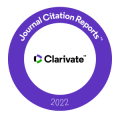






Aims and scope
In 21st century living, engineers and researchers need to deal with growing and emerging problems related to climate change, oil, hydrogen and water storage, handling, storage and disposal of toxic and hazardous wastes, remediation of contaminated sites, sustainable development and energy derived from the ground. These challenges are not isolated but occur at the human-environmental-technological nexus that confronts society’s default modes of thinking.
Environmental Geotechnics aims to disseminate knowledge and provides fresh perspectives regarding the basic concepts, theory, techniques and field applicability of innovative testing and analysis methodologies and engineering practices in geoenvironmental engineering.
All relevant papers are carefully considered, vetted by a distinguished team of international experts and rapidly published. Full research papers, short communications and comprehensive review articles are published under the following broad subject categories:
- geoenvironmental engineering
- soil and rock physics, geochemistry and geohydrology biological processes in soil, soil-atmosphere interaction, cold region geotechnics
- electrical, electromagnetic, and thermal characteristics of porous media
- industrial and municipal waste management and their valorization, multiphase science, landslide wasting
- beneficial reuse of marginal geomaterials
- soil and water conservation and remediation
- sensor development and applications
- impact of climatic changes on geoenvironmental, geothermal/ground-source energy, carbon sequestration, oil and gas extraction techniques, sustainable energy development
- uncertainty, reliability and risk, monitoring and forensic geotechnics
- application of Artificial intelligence (AI), Dx in geoenvironmental engineering
- Techno-Socio-legal-geopolitical-commercial aspects of the projects and situations
- Space geotechnics, environmental impacts of space mining
Environmental Geotechnics is aligned with the following Sustainable Development Goals:





Awarded annually since 2016, this prize is presented to the best paper published in Environmental Geotechnics.
Each year we award authors from both industry and academia who have produced work judged by their peers to be of exceptional quality and benefit to the civil engineering, construction and materials science community. Papers outside of our archive (published after 2002) are free to read here in perpetuity as part of our commitment to furthering knowledge and best practice.

This title is aligned with our sustainable structures and infrastructures goal
We recognise the transformative power of sustainable engineering, design and building practices in creating a world where our planet and its inhabitants can thrive.
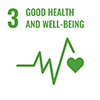
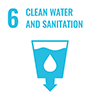
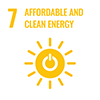
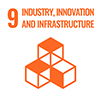
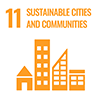
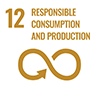
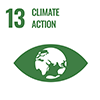
Related journals
These journals are part of our ICE engineering titles. Explore our ICE Publishing journals collection to find out more.
Ground Improvement
Geotechnical papers on the reinforcement and optimisation of ground for engineering.
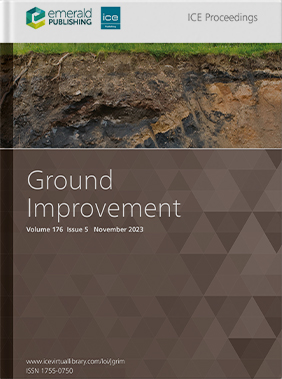
Engineering Sustainability
Research and practice papers on engineering a sustainable future.
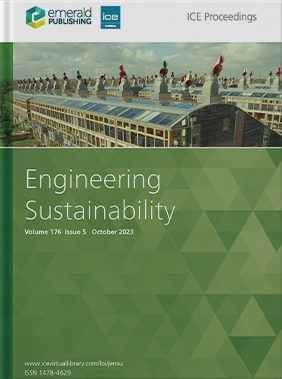
Water Management
High-quality articles on the management of water in natural and engineered systems.
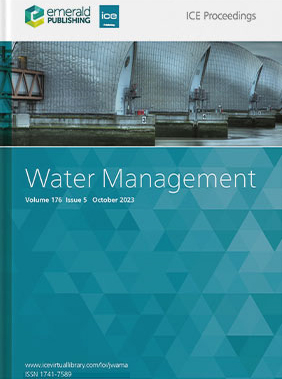
Waste and Resource Management
Original research and practice papers on civil engineering aspects of the waste resource management cycle.
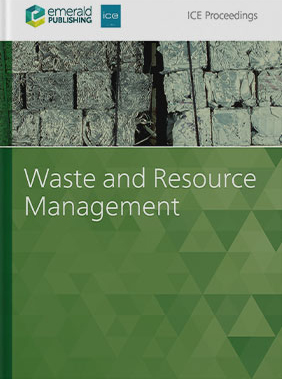
Journal of Environmental Engineering and Science
Interdisciplinary solutions to environmental health and engineering problems.
